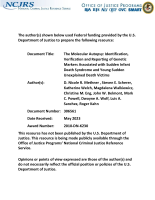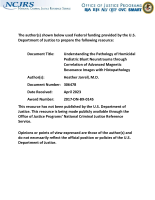What Medical Examiner’s And Coroner’s Offices Should Know About Molecular Autopsy
Date Published
December 2023
Agencies
NIJ-Sponsored
Publication Type
Research (Applied/Empirical)





